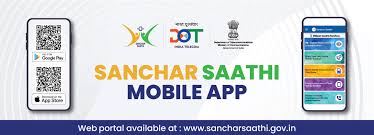Ratnagiri Buddhist Site

- 19 Jan 2025
In News:
The Archaeological Survey of India (ASI) has resumed excavations at the ancient Buddhist site of Ratnagiri in Odisha’s Jajpur district, unveiling monumental discoveries that underline its rich religious, cultural, and maritime legacy. This renewed effort comes more than 60 years after the site was first excavated between 1958 and 1961.
About Ratnagiri
- Meaning: Ratnagiri translates to “Hill of Jewels.”
- Location: Situated on a hill between the Brahmani and Birupa rivers, northeast of Bhubaneswar.
- Part of the Diamond Triangle: Along with Lalitgiri and Udaygiri, Ratnagiri forms Odisha’s famed “Diamond Triangle” of Buddhist heritage sites.
- Historical Period: Flourished between the 5th and 13th centuries CE, peaking under the Bhauma-Kara dynasty (8th–10th century CE).
- Buddhist School: An important centre for Mahayana and especially Vajrayana (Tantrayana) Buddhism.
- It possibly rivalled Nalanda in prominence as a Buddhist learning centre.
- The monastery complex at Ratnagiri is the only one in India with a curvilinear roof, once housing about 500 monks.
Recent Discoveries by ASI
- Three colossal Buddha heads, each measuring 3–4 feet.
- A massive palm sculpture, 5 feet in size.
- Hundreds of votive stupas, sculptures of Buddhist deities.
- A monolithic elephant statue, 5 feet long and 3.5 feet tall.
- Pottery, inscribed stones, beads, stone pillars, and a brick wall believed to be part of a larger structure.
- Rich ceramic assemblages, which may shed light on the region’s cultural and technological evolution.
These artefacts are estimated to date back to the 8th and 9th centuries CE and are believed to enhance understanding of Buddhism’s evolution in Odisha and its linkages with other cultures.
Buddhism in Odisha & Southeast Asian Links
- Buddhism gained a strong foothold in Odisha after Emperor Ashoka’s conquest of Kalinga (modern-day Odisha) in 261 BCE, a turning point that led him to embrace Buddhism.
- Though Buddha never visited Odisha, the region became instrumental in spreading Buddhism to Southeast Asia, especially during the Bhauma-Kara period.
- The state maintained robust maritime trade and cultural links with regions like Java, Bali, Sumatra, Borneo, Myanmar, and Sri Lanka.
- Baliyatra Festival: A vibrant annual event held in Cuttack, commemorating Odisha’s ancient seafaring ties with Bali and other Southeast Asian regions.
- According to some studies, Chinese monk Hiuen Tsang may have visited Ratnagiri during his travels in India (638–639 CE).
Significance of the Renewed Excavations
- The ASI aims to uncover partially visible structures, complete the site’s mapping, and contextualize the findings within the broader Buddhist history of India and Southeast Asia.
- Researchers hope to discover signs of foreign architectural or cultural influences, further confirming ancient Odisha’s global Buddhist and trade connections.
- The discoveries reaffirm Ratnagiri’s importance as a cornerstone of Buddhist learning and art, potentially on par with other renowned ancient centres like Nalanda and Vikramashila.
Interest Equalisation Scheme (IES)

- 19 Jan 2025
In News:
- Launched in April 2015, the Interest Equalisation Scheme (IES) offers subsidised interest rates on pre- and post-shipment export credit to Indian exporters, particularly MSMEs.
- The Commerce Ministry has sought a Rs 3,000 crore extension of the scheme beyond December 2024, with emphasis on supporting MSME exporters amidst global economic challenges.
Objectives of IES:
- Reduce Cost of Credit: Offers 3% to 5% interest subvention to make export credit affordable.
- Boost Export Competitiveness: Enables Indian exporters, especially MSMEs, to match international pricing.
- Encourage Export Diversification: Supports MSMEs in exploring new markets and products.
- Enhance Financial Inclusion: Promotes access to formal credit systems for small exporters.
Key Features:
- Interest Subsidy:
- 3% for MSME manufacturer exporters.
- 2% for merchant and manufacturer exporters of 410 specified tariff lines.
- Coverage: Initially limited to select products, later extended to all MSME exporters.
- Implementation:
- Managed by the RBI, in coordination with DGFT and authorized banks.
- Subsidy reimbursed to banks offering export credit at reduced rates.
- Banks exceeding Repo Rate + 4% are excluded.
Need for Extension:
- The scheme expired in December 2024, but exporters are demanding continuation due to:
- Rising global inflation and logistics disruptions (e.g., Red Sea crisis).
- Increase in credit duration demands from foreign buyers (120–150 days).
- Decline in export credit availability despite higher demand.
- FIEO reports a drop in outstanding export credit from ?2.27 lakh crore (2023) to ?2.17 lakh crore (2024).
- MSMEs operate on thin margins, and the subvention can make or break deals.
Significance for MSMEs:
- MSMEs contribute ~45% to India’s total exports and often struggle with high borrowing costs and limited financial access.
- Affordable credit via IES allows MSMEs to:
- Remain price competitive.
- Take larger and longer-term orders.
- Invest in product innovation and value addition.
- Improve market diversification and resilience.
Challenges in Accessing Credit:
- Stringent eligibility norms and collateral requirements.
- Complex administrative procedures for availing benefits.
- Limited awareness among small enterprises about the scheme.
- Slow disbursal and inconsistent application by banks.
Policy Implications and the Way Forward:
- A revamped, MSME-focused IES can ensure inclusive growth and boost India’s export-led development.
- Calls for:
- Simplification of procedural norms.
- Higher interest subvention limits or removal of caps (e.g., ?50 lakh per IEC holder).
- Longer validity (multi-year horizon) for predictability and planning.
- Aligns with the broader goals of Atmanirbhar Bharat, Make in India, and achieving $1 trillion in exports by 2030.
Exercise La Perouse 2025
- 19 Jan 2025
In News:
India is participating in the fourth edition of the multinational naval exercise La Perouse, hosted by France in key maritime straits—Malacca, Sunda, and Lombok. The Indian Navy's INS Mumbai, an indigenously built guided-missile destroyer, represents India.
Key Highlights:
- Participating Countries: Navies from India, France, Australia, USA, UK, Indonesia, Malaysia, Singapore, and Canada.
- Objectives:
- Enhance maritime situational awareness.
- Promote tactical interoperability through joint training.
- Conduct surface warfare, anti-air warfare, air defence, and VBSS (Visit, Board, Search and Seizure) operations.
- Strengthen cooperation on maritime surveillance, air operations, and information sharing.
- Significance:
- Demonstrates commitment to a rules-based international order in the Indo-Pacific.
- Reflects India’s vision of SAGAR (Security and Growth for All in the Region).
- Counters increasing presence of Chinese naval forces in the Indo-Pacific.
Strategic Location: Key Straits in Focus
- Strait of Malacca
- Connects: Andaman Sea (Indian Ocean) to South China Sea (Pacific Ocean).
- Geography: Lies between Peninsular Malaysia and Sumatra, near Singapore.
- Significance: One of the world’s busiest trade routes.
- Choke Point: Narrowest part (Philips Channel) is only 2.8 km wide.
- Sunda Strait
- Connects: Java Sea (Pacific) to the Indian Ocean.
- Between: Java and Sumatra (Indonesia).
- Challenges: Volcanic islands (e.g., Krakatoa), shallow depths (20–100 m).
- Importance: Secondary maritime route, strategic in times of congestion in Malacca.
- Lombok Strait
- Connects: Java Sea to the Indian Ocean.
- Between: Bali and Lombok islands.
- Depth: 250–1,300 meters – suitable for large vessels.
- Unique Feature: Part of the Wallace Line, a major ecological boundary.
Sanchar Saathi App

- 19 Jan 2025
In News:
In a landmark move to enhance telecom accessibility, security, and empowerment across India, the Union Minister of Communications launched a suite of citizen-focused initiatives. Key highlights of the event included the launch of the Sanchar Saathi Mobile App, National Broadband Mission (NBM) 2.0 and the inauguration of the Intra Circle Roaming facility at DBN Funded 4G Mobile Sites.
Sanchar Saathi Mobile App
- Launched by: Department of Telecommunications (DoT), Ministry of Communications.
- Platforms: Available on Android and iOS.
- Objective: Strengthen telecom security, empower citizens, and combat telecom fraud.
- Key Features:
- Chakshu (SFC): Report suspected fraud communications (calls/SMS).
- Know Your Mobile Connections: Identify and manage all mobile numbers issued in one’s name.
- Block Lost/Stolen Devices: Swiftly block, trace, and recover lost/stolen mobile phones.
- Verify Handset Genuineness: Confirm the authenticity of mobile handsets before purchase.
Impact so far (via Sanchar Saathi Portal, launched May 2023):
- 2.75 crore fraudulent connections disconnected.
- 25+ lakh lost/stolen devices blocked.
- 12.38 lakh WhatsApp accounts linked to cybercrimes disengaged.
- 11.6 lakh mule bank accounts frozen.
- 90% spoofed international calls blocked within 2 months of new prevention system.
National Broadband Mission (NBM) 2.0
- Launched by: Union Minister of Communications, builds upon NBM 1.0 (2019–2024).
- Part of: National Digital Communications Policy, 2018.
- Aim: Digitally empower citizens and bridge the digital divide to realize the vision of Viksit Bharat by 2047.
Key Targets (by 2030):
- 2.70 lakh villages to be connected with OFC (from ~50,000 now).
- 90% broadband connectivity to anchor institutions (schools, PHCs, Panchayats, Anganwadis).
- Fixed broadband speed: Increase national average from 63.55 Mbps (2024) to 100 Mbps.
- Right of Way (RoW) disposal time: Reduce from 60 days to 30 days.
- Rural internet subscribers: Increase from 45 to 60 per 100 population.
- 30% of mobile towers to be powered by sustainable energy.
- 100% mapping of PSU fiber networks on PM GatiShakti National Master Plan by 2026.
- Enhanced use of “Call Before u Dig (CBuD)” app to protect underground telecom infrastructure.
- Facilitate 5G rollout, and prepare infrastructure for 6G and common telecom ducts in all linear projects.
- Leverage power sector (e.g. Optical Ground Wire - OPGW) for broadband in remote/hilly areas.
Intra Circle Roaming (ICR) at DBN-Funded 4G Sites
- Launched by: Ministry of Communications.
- Implemented under: Digital Bharat Nidhi (DBN), formerly USOF.
- Objective: Allow subscribers of multiple telecom service providers (TSPs) (e.g., BSNL, Airtel, Reliance) to access 4G services from a single DBN-funded tower.
- Impact:
- Eliminates need for duplicate towers.
- Covers 27,000+ towers across 35,400 remote villages.
- Enhances user choice, reduces cost, and ensures efficient infrastructure use.
Nigeria admitted as BRICS Partner Country

- 19 Jan 2025
In News:
- Nigeria has been admitted as the 9th "Partner Country" of the BRICS grouping under Brazil’s presidency in 2025.
- Other BRICS partner countries include Belarus, Bolivia, Cuba, Kazakhstan, Malaysia, Thailand, Uganda, and Uzbekistan.
- A "partner country" in BRICS is allowed to attend summits, ministerial meetings, and participate in joint initiatives, but does not have formal membership or decision-making power.
About Nigeria’s Role
- Nigeria has the 6th largest population globally and the largest in Africa.
- It is the 4th largest economy in Africa, often termed the "Giant of Africa".
- Nigeria plays a significant role in South-South cooperation and reform of global governance structures, aligning with BRICS' strategic objectives.
About BRICS
- Founded: 2009 by Brazil, Russia, India, and China; South Africa joined in 2010.
- New Full Members (as of 2023): Iran, Egypt, Ethiopia, UAE, and Indonesia (effective Jan 2025).
- Membership Invitations: Saudi Arabia has been invited but not yet accepted.
- Applicants: Turkey, Azerbaijan, Malaysia have formally applied.
- Three Pillars of Cooperation:
- Political and Security
- Economic and Financial
- Cultural and People-to-People Exchanges
- Represents ~40% of global population and ~37.3% of global GDP.
India has hosted BRICS Summits in 2012 (4th), 2016 (8th), and 2021 (13th).
